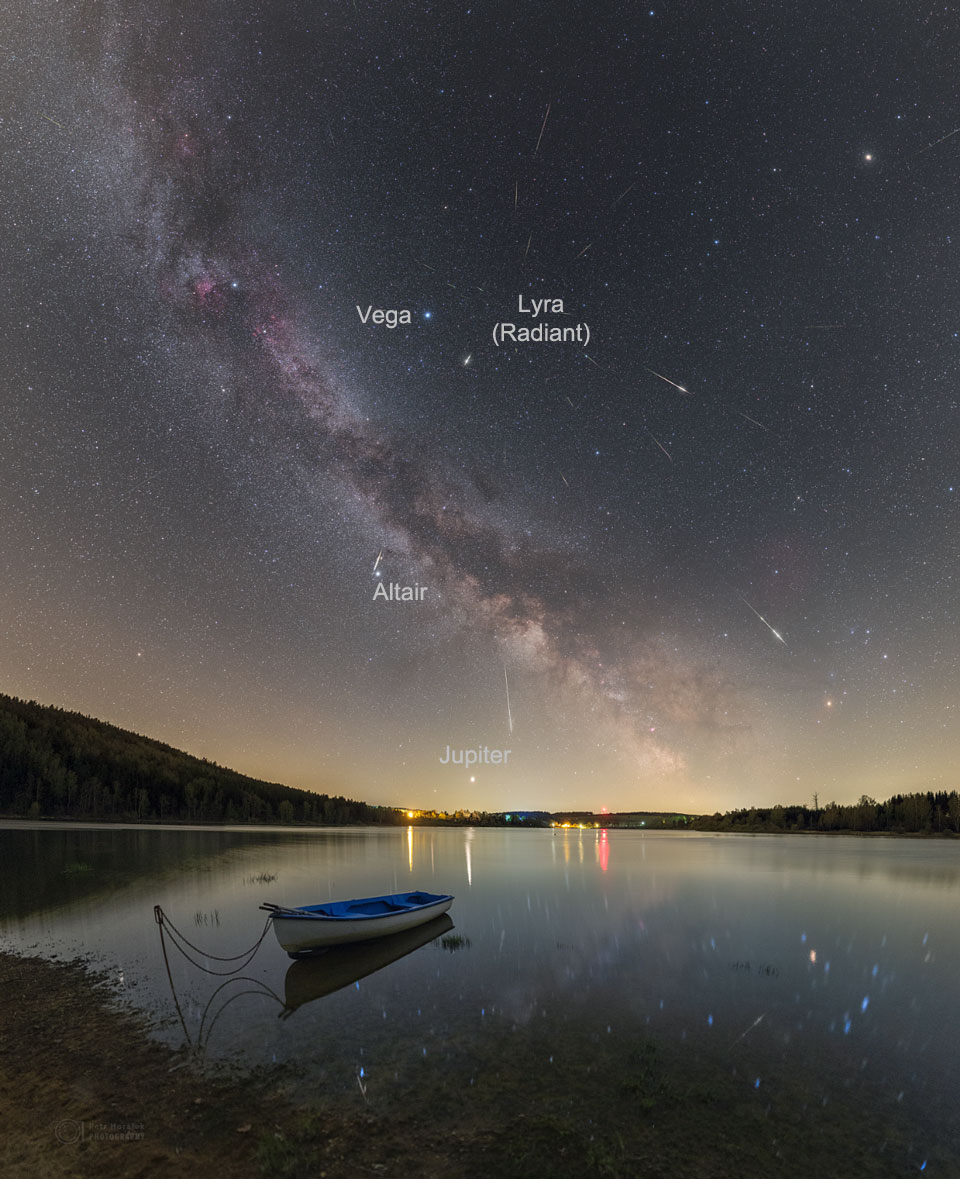2020 May 12
Lyrid Meteors from the Constellation Lyra
Image Credit & Copyright: Petr Horálek
Explanation: Where are all of these meteors coming from? In terms of direction on the sky, the pointed answer is the constellation of Small Harp (Lyra). That is why the famous meteor shower that peaks every April is known as the Lyrids — the meteors all appear to came from a radiant toward Lyra. In terms of parent body, though, the sand-sized debris that makes up the Lyrid meteors come from Comet Thatcher. The comet follows a well-defined orbit around our Sun, and the part of the orbit that approaches Earth is superposed in front of Lyra. Therefore, when Earth crosses this orbit, the radiant point of falling debris appears in Lyra. Featured here, a composite image containing over 33 meteors (can you find them all?) from last month’s Lyrid meteor shower shows several bright meteors that streaked over a shore of Seč Lake in the Czech Republic. Also visible are the bright stars Vega and Altair, the planet Jupiter, and the central band of our Milky Way Galaxy.
Notable APOD Submissions: Lyrid Meteor Shower 2020
Tomorrow’s picture: jupiter IR
天琴座流星雨
影像提供与版权: Petr Horálek
说明: 这些流星打那里来的?以在天空的方向来说,答案是天琴座。这群人间四月天的著名流星雨,因为辐射点在天琴座方向,故称为天琴座流星雨。以流星雨的母源来说,这些形成天琴座流星的沙粒碎片,其源头是撤切尔彗星。这颗彗星沿明确的轨道绕行太阳,而它和地球的轨道在天琴座的前方交错。也因此,每当地球穿过这颗彗星的轨道时,轨道上的碎片就看似从位在天琴座的辐射点洒向地面。 这幅含数颗明亮流星在内,共33颗流星(请细细数来)的组合影像,是在上个月天琴座流星雨期间,记录于捷克.Seč湖的上空。影像中,还可见到明亮的织女和牛郎、木星、及我们银河系的中央盘面。
APOD提交的著名作品:Lyrid Meteor Shower 2020
明日的图片: jupiter IR







